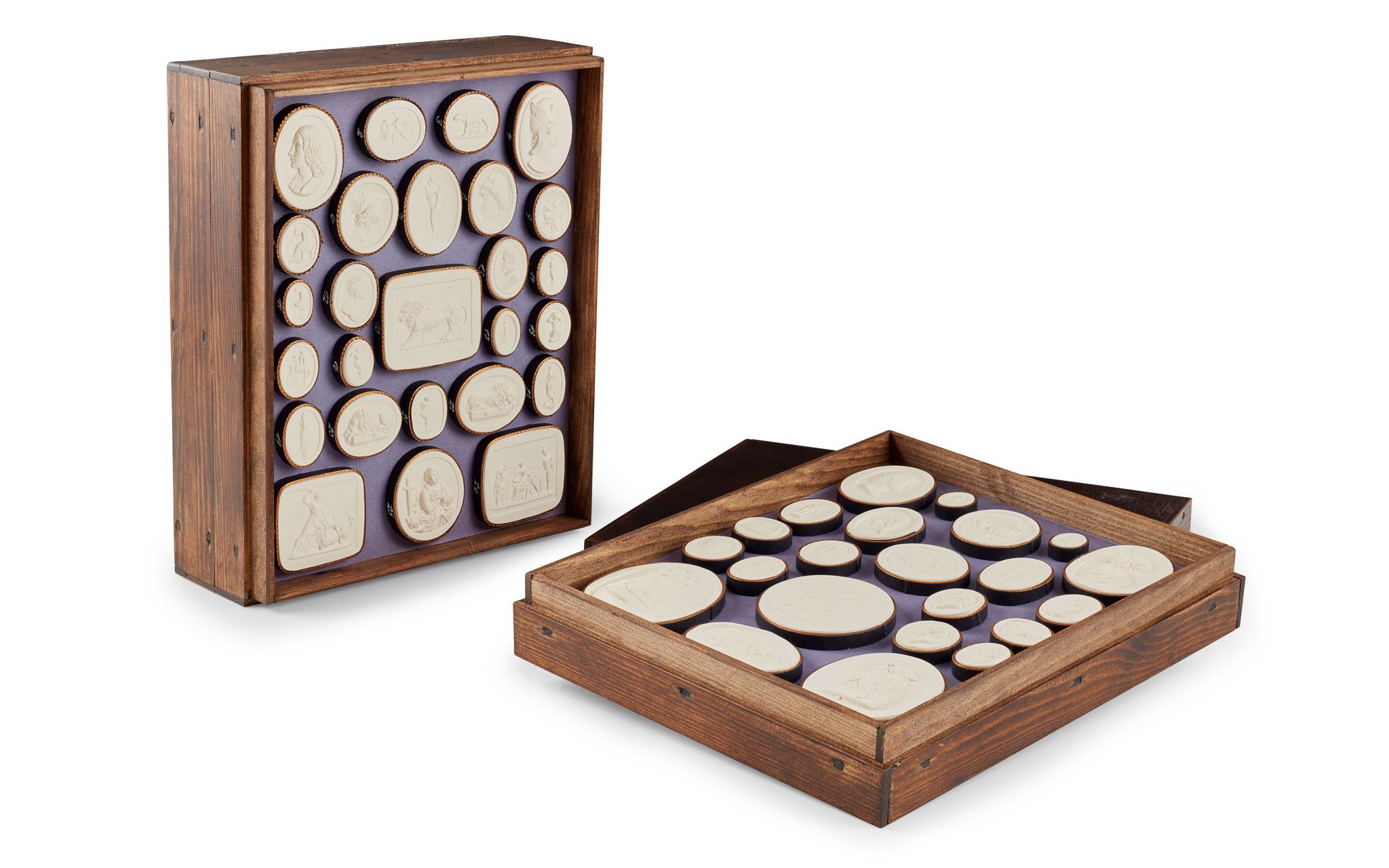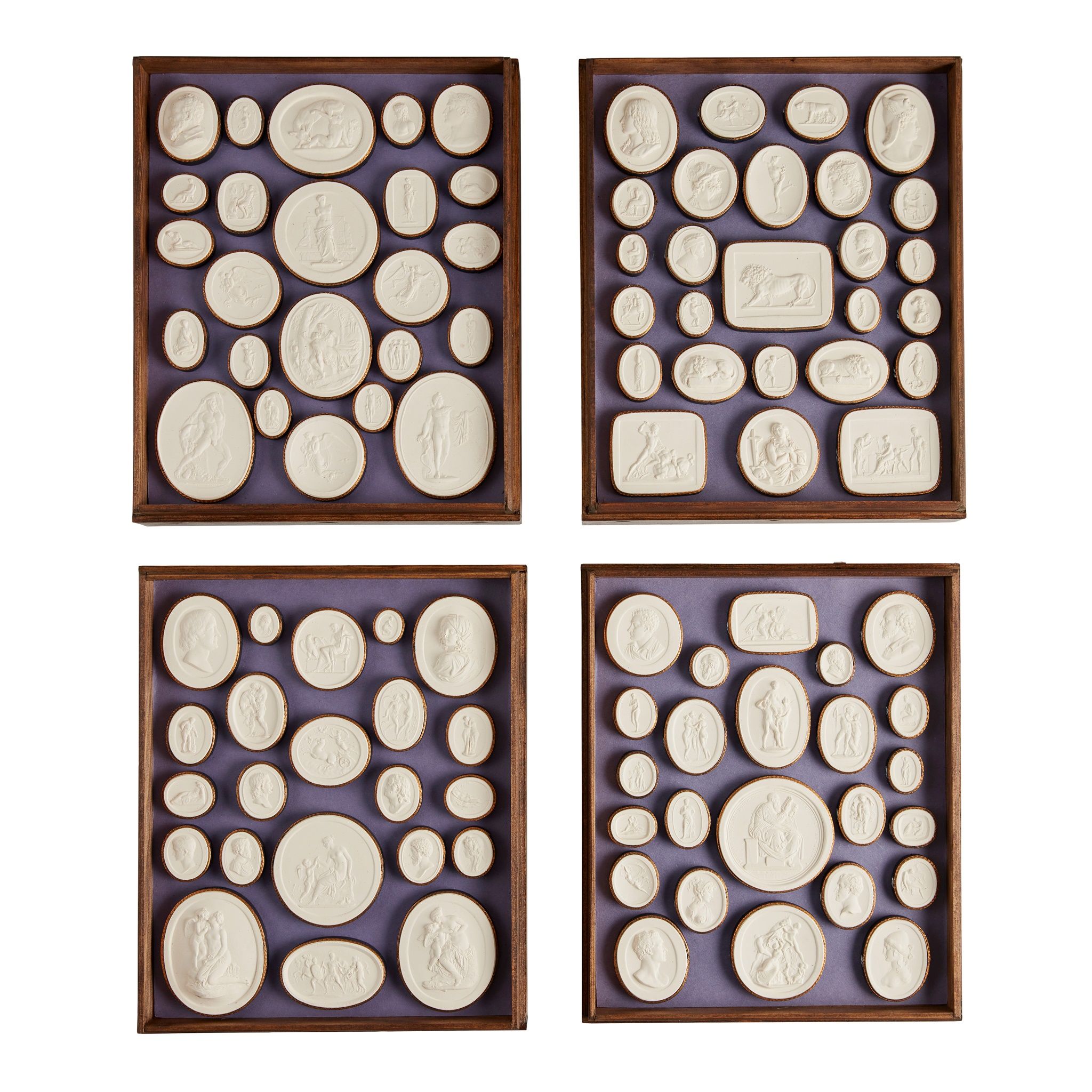Plaster Intaglios & Cameos
Popular souvenirs of The Grand Tour, plaster intaglios and cameos provided an opportunity for travellers to carry a reminder of the exceptional artwork they encountered on their adventures throughout the continent, home.

22 February 2023
Lyon & Turnbull
Popular souvenirs of The Grand Tour, plaster intaglios and cameos provided an opportunity for travellers to carry a reminder of the exceptional artwork they encountered on their adventures throughout the continent, home.
Originally used for sealing letters and signing messages, early examples of intaglios were intricately engraved into semi-precious stones, quartzites, garnets and hardstones. Made from similar stones, cameos were carved for more decorative purposes with their designs in relief. Ancient Greek or Roman examples often depicted mythological subjects or portraits of important individuals.
Many examples from antiquity survived in ecclesiastical collections despite their pagan subjects, as they were set for decoration in furniture, crosses and book bindings, while others have also been subsequently excavated. Later examples looked back to these pieces for inspiration, illustrating similar scenes and profiles, turning to classical sculptures or copying famous pieces in royal or papal collections.

Periods of revival took place during the Renaissance and later during the 18th century as exciting ancient artefacts were discovered and society's enthusiasms changed. Italy, particularly Milan and later Rome, become centres for excellence in the 18th century. As popularity in The Grand Tour grew amongst the upper class, cameos and intaglios were collected during their travels to display prominently in their homes as mementos.
Plaster intaglios and cameos (such as those illustrated) were popular souvenirs of The Grand Tour. Intaglios and cameos became so sought-after that artisans began to make reproductions in plaster, to be purchased by travellers. Plaster intaglio and cameo casts were then often mounted into books or cases to be put on display once the travellers arrived home. These plaster impressions provided an opportunity to bring home miniature replicas of the masterpieces they experienced while abroad.
Interest in collecting these miniature masterpieces has never waned. They appeal to the collector for many reasons: their value as works of art, the craftsmanship, their appeal as a jewel in their own right, and also as historical artefacts. They are valuable, portable and a way of displaying one’s appreciation of not only great art, but ancient myth and history.

Many famous collections were amassed throughout history. Julius Cesar and Marcus Aurelius were said to be collectors. Later during the Neoclassical revival Thomas Howard, 14th Earl of Arundel, amassed a large collection while on tour in Europe during the early 17th century. William Cavendish, 2nd Earl of Devonshire was also an avid collector, while the 4th Duke of Marlborough was recorded as often turning to his collection as a source of ‘relief’ from his ‘ambitions wife’, sister and children. Even Empress Catherine the Great of Russia had an entire room in her palace with fitted cabinets which in later life she spend hours of relaxation, cataloguing.
While, at times, it may be difficult to decern ancient examples from 17th and 18th century pieces, many types of copies have flourished. From hard stone and gem intaglios and cameos of the Grand Tour era, to the trays of plaster casts and even to modern impressions in soap by London’s interior designs de la mode. Intaglios and cameos continue to fascinate us, a wealth of history in miniature.